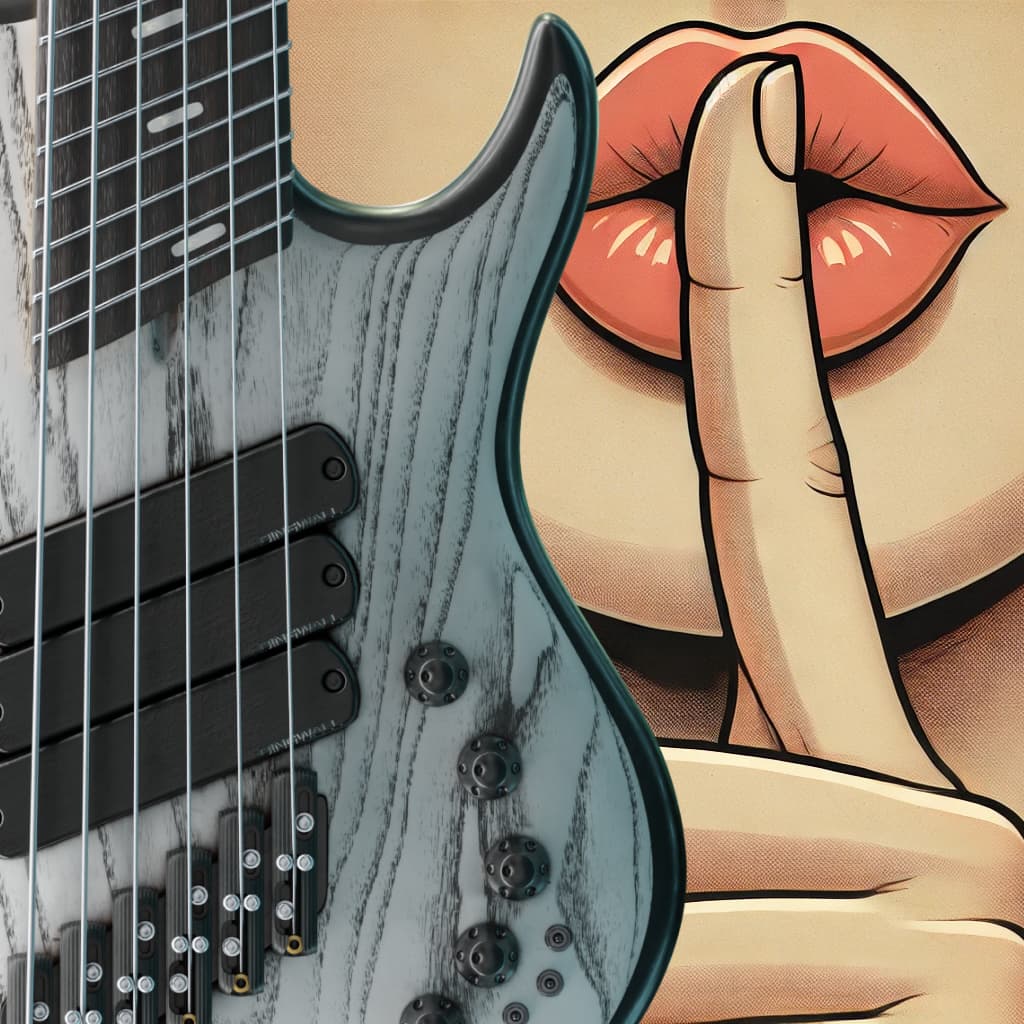5 Secrets To Amazing Bass

Mixing low-end frequencies can be a challenging task, but with the right techniques and tools, you can achieve an amazing low-end in your mixes. Here are five of the best ways to do just that:
EQ
EQ, or equalization, is an essential tool for sculpting the low-end frequencies in your mix. By using a high-pass filter to remove unwanted low-frequency rumble (try anywhere from 20Hz to 60Hz!), then bell EQ to tighten up resonances across the low-mid frequencies, you can create a very punchy bass tone.
If the bass guitar is conflicting a lot with your bass drum, a bell EQ notch somewhere between 60Hz and 80Hz will do the trick, allowing your bass drum to work its magic.
You can usually clear up the ringyness of a bass guitar with a notch between 160Hz to 180Hz, and the muddiness with a broad sweep at around 250Hz.
If the bass still sounds a little flat, you can cut with a wide sweep between 600Hz and 800Hz to create extra dimensionality.
The upper mids will depend heavily on the bass being used, the strings, picking type and playing intensity as well as the processing you use to create the final sound, but much of the presence of the bass is centered between 2kHz and 4kHz. If it sounds harsh, notching a bit around here can help a lot (use an EQ with a spectrum analyzer such as Pro-Q 3 to help you!), and for many distorted bass tones gently low-passing everything above 6kHz can be absolutely fine.
Compression
Compression is critical when mixing bass, because it's all about having even energy output per note. The more even the notes are, the tighter and more coherent the bass sounds.
Compression is critical for helping control the dynamic range of bass, whether it be a real bass guitar or a synth bass.
The key lies in getting the settings right! We recommend you try an 1176-style FET compressor, with the attack close to fully open (near the slowest setting), the release at fastest, and the ratio at 4:1.
This is a great starting point for all kinds of basses!
You can follow this up with a brick-wall limiter - such as the one found in Flatline 2 - taking off only a small amount of gain on the back end to tighten up the remaining peaks.
Saturation
Saturation is a technique that adds warmth and thickness to the low-end. It can help the low-end cut through the mix and make it sound more powerful. There are many saturation plugins available that you can use to achieve this effect.
One such plug-in is DoubleTap, which not only features a two-stage compressor purpose dialed for bass guitar, but two saturation algorithms specifically designed to enhance the presence of bass in your mix.
With DoubleTap your can get both the compression and saturation of your bass tracks out of the way in a few seconds!
Layering
Layering different sounds can add depth and complexity to the low-end. For example, you can layer a sub-bass with a bassline to create a rich, full-bodied sound.
Alternatively you can run your bass guitar through multiple amps and pedals, then combine the resulting tracks to create rich and unique midrange textures.
One unit we really love for this is Neural DSP's Darkglass Ultra - featuring immaculate emulations of Darkglass Electronics' B7K and Vintage Deluxe pedals.
You can combine these with Neural DSP's various guitar amp models to create all sorts of unique and awesome midrange textures with your bass sounds.
Stereo imaging
Stereo imaging techniques, such as panning and Haas effect, can help give the low-end a sense of space in the mix. This can make the low-end sound more dynamic and add excitement to your music.
Tread carefully, however, as some people prefer mono bass - especially if they're expecting to hear it pressed on vinyl. Excessive stereo bass content can be very tricky for record players to reproduce.
To get the best of both worlds, consider sending your bass track to a high-passed stereo chorus (try 300Hz!). This way you can blend in as much stereo midrange content as you need in order to give the bass more presence and width in the mix, without muddying up the low-end.
By using a combination of EQ, compression, saturation, layering, and stereo imaging, you can create amazing low-end in your mixes. Experiment with different techniques and tools to find what works best for your music!

